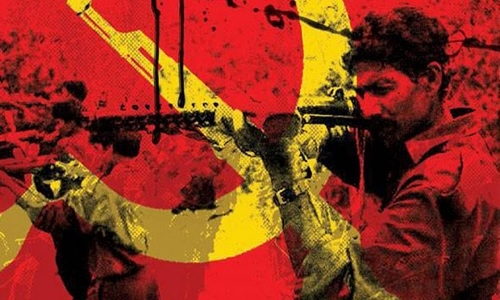
By Kartik Lokhande
Though the police and other agencies have been saying it and taking various actions from time to time exposing the presence of Maoists and their sympathisers in Nagpur, now a book brought out by the Maoists also has revealed how the erstwhile Naxalites and present-day Maoists used trade unions and urban intelligentsia in spreading tentacles of radicalisation here. The first of the two-volume book brought out by Central Committee of the Communist Party of India (Maoist) features detailed profiles of some of its Central Committee members, who were killed in encounters or who died. Among other profiles is one of Anuradha Ghandy, who was also known by various aliases as Narmada, Varsha, Rama, and Janaki Didi. Running into 25 pages, the said profile hails Anuradha Ghandy’s association with several organisations, including Vidyarthi Pragati Sanghatana (VPS), Centre for Protection of Democratic Rights (CPDR), All India League for Revolutionary Culture (AILRC), Navjawan Bharat Sabha, Stree Chetana, Akhil Maharashtra Kamgar Union, etc.
She had shifted from Mumbai to Nagpur in 1982 and got a job as a teacher in Sociology in the erstwhile Nagpur University. Utilising this as a cover, she focussed on spreading the ultra-Left ideology among masses through trade unions and Dalit areas, states the Maoist book. In fact, the Maoist book reveals that she had played an instrumental role in the strike at the under-construction Khaperkheda thermal power project, which had seen violence followed by police firing and even imposition of curfew for some time. As per the Maoist book, Anuradha Ghandy spread her work among construction workers, contractual labourers, domestic helps, workers in various industries in MIDC area in Hingna, railway workers, beedi workers in Bhandara district, powerloom workers in Kamptee, coal mine workers in Chandrapur. To further her cause, she tried to build ‘United Front’ of trade unions in not only Nagpur but also Chandrapur, Amravati, Yavatmal in Vidarbha and also in Jabalpur in Madhya Pradesh.
In a bid to radicalise Dalit youths in particular, Anuradha Ghandy rented a house in Indora area of Nagpur. She utilised cultural events to influence the youngsters. At the same time, she took this time to study ‘Dalit Question with Class Perspective’, which led to creation of a document on Caste Question, which is still referred to in the outlawed Maoist organisation to spread narratives aimed at dividing the society. This document also had contents extracted from her article published in ‘Satyashodhak Marxwad’. Not only did Anuradha engage in radicalising the youths by way of creating what Maoists call ‘consciousness’, but also was instrumental in campaigning for Kamlapur Convention of the erstwhile Naxalites in 1984 in Gadchiroli district, and Jan Natya Mandali’s cultural programme featuring poet Ghaddar in 1992 in Nagpur. Through such campaigns and programmes, Anuradha Ghandy ‘attracted the labourers, Dalits, students, and intelligentsia’ towards ‘revolutionary politics’, states the Maoist book. It boasts her contribution in winning ‘association’ of many senior professors, journalists, well-known script-writers, and leading lawyers of Nagpur. Her influence could be gauged from a mention in the book that she translated – Telugu poems of ‘Comrade Cherbandaraju’ into Marathi anthology, which she got released at the hands of a ‘well-known Marathi poet’. Later on, with increased surveillance, she went underground in the 1990s and served as armed cadre in Bastar (now in Chhattisgarh).
The Maoist book mentions that Anuradha Ghandy served in various capacities over the years in Communist Party of India (Marxist-Leninist) (People’s War), and later in CPI (Maoist). When she died of Falciparum Malaria in April 2008, she was serving as Central Committee Member of CPI (Maoist), Independent In-charge of Kendriya Mahila Sub-Committee that was preparing a document on ‘Marxism and Feminism’ from Maoist perspective, and also as Member of South Western Regional Bureau of Central Committee. According to sources, Anuradha Ghandy’s influence stayed on Nagpur’s intelligentsia for several years. “Many of the intelligentsia have been under scanner for years. Following the recent Bhima-Koregaon and Elgar Parishad case, sympathisers in Nagpur and Vidarbha region have been keeping a low-profile to avoid attracting attention of the agencies,” said an official, wishing to remain unnamed.
https://www.thehitavada.com/Encyc/2023/8/2/Maoist-book-reveals-how-Naxals-carried-out-radicalisation-in-Nagpur-for-decades.html






